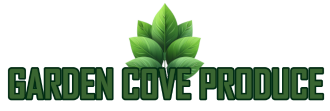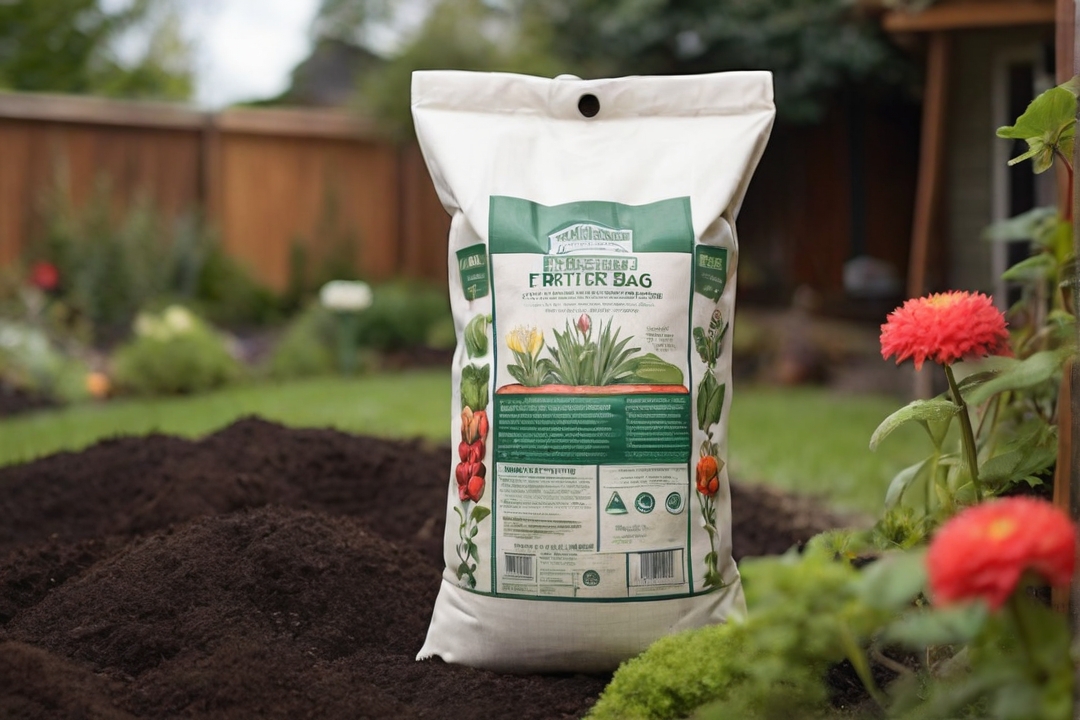Fertilizer plays a crucial role in gardening, as it provides essential nutrients that plants need to grow and thrive. Without proper fertilization, plants may struggle to reach their full potential and produce healthy fruits, vegetables, or flowers. One popular type of fertilizer is 13-13-13 fertilizer, which contains equal amounts of nitrogen (N), phosphorus (P), and potassium (K). In this article, we will explore the importance of fertilizer in gardening, specifically focusing on 13-13-13 fertilizer.
Table of Contents
- What is 13-13-13 Fertilizer and How Does it Work?
- Nutrients Other Than NPK
- Benefits of Using 13-13-13 Fertilizer in Your Garden
- When and How to Apply
- Preparing Your Garden for Fertilization: Tips and Tricks
- Dos and Don’ts
- Maximizing the Effectiveness: Best Practices
- How to Store and Handle
- Alternatives to 13-13-13 Fertilizer: Exploring Your Options
- Common Mistakes to Avoid
- FAQs
What is 13-13-13 Fertilizer and How Does it Work?
13-13-13 Fertilizer is a balanced fertilizer that contains equal amounts of nitrogen (N), phosphorus (P), and potassium (K). The numbers “13-13-13” represent the percentage of each nutrient in the Fertilizer.
Nitrogen is responsible for promoting leafy growth and overall plant vigor. Phosphorus aids in root development, flowering, and fruiting. Potassium helps with disease resistance, water regulation, and overall plant health.
When applied to the soil, 13-13-13 Fertilizer dissolves and gradually releases its nutrients. This slow-release feature ensures that plants receive a steady supply of nutrients, preventing nutrient deficiencies or excesses. The balanced ratio of nutrients in 13-13-13 Fertilizers makes it suitable for a wide range of plants, including vegetables, fruits, flowers, and ornamentals.
Nutrients Other Than NPK
If Nitrogen, Potassium and Phosphorus amount to a total of 39% of the ingredients, what constitutes the rest of 61%?
These Fertilizers may also contain secondary and micronutrients in varying amounts, depending on the specific formulation and intended use. These secondary and micronutrients can include elements like sulfur (S), calcium (Ca), magnesium (Mg), boron (B), iron (Fe), zinc (Zn), copper (Cu), manganese (Mn), and molybdenum (Mo), among others.
The composition of secondary and micronutrients in a fertilizer can vary, so it’s important to check the product label or specifications to see what other elements are included and in what quantities. These additional nutrients are often essential for plant growth and can help address specific nutrient deficiencies in the soil.
Benefits of Using 13-13-13 Fertilizer in Your Garden

Using 13-13-13 Fertilizers in your garden can benefit your plants and soil.
Increased plant growth and yield: The balanced ratio of nutrients in 13-13-13 Fertilizers promotes healthy plant growth, resulting in larger and more abundant fruits, vegetables, or flowers. Nitrogen stimulates leafy growth, phosphorus enhances root development, and potassium supports plant vigor.
Improved soil fertility: Regular application of 13-13-13 Fertilizer helps replenish essential nutrients in the soil, improving its fertility and ensuring that plants have access to the nutrients they need. This leads to healthier soil and better overall plant health.
Enhanced plant health and disease resistance: The nutrients provided by 13-13-13 Fertilizers contribute to strong and healthy plants that are resistant to diseases and pests. Potassium, in particular, plays an important role in strengthening cell walls and promoting disease resistance.
When and How to Apply
Timing of application: It is important to apply 13-13-13 Fertilizer at the right time to maximize its effectiveness. For most plants, it is recommended to apply Fertilizer before planting or during the early stages of growth. This allows the nutrients to be readily available when the plants need them the most. However, it is important to follow specific guidelines for each type of plant, as some may require different timing for optimal results.
Methods of application: There are several methods for applying 13-13-13 Fertilizer to your plants. One common method is broadcasting, where the Fertilizer is spread evenly over the soil surface. This method is suitable for large areas or when planting seeds or transplants. Another method is banding, where the Fertilizer is placed in a narrow band along the row or around individual plants. This method is useful for established plants or when targeting specific areas.
Preparing Your Garden for Fertilization: Tips and Tricks

Soil testing: Before applying 13-13-13 Fertilizers, it is recommended to carry out soil test to determine the nutrient levels and pH of your soil. This will help you determine if any specific nutrients are lacking or the pH needs adjustment. Soil testing kits are easily available at garden centers or through agricultural extension offices.
Soil preparation: Soil preparation is essential for optimal fertilizer absorption and plant utilization. This includes removing weeds, loosening the soil, and adding organic material such as compost or aged manure. These steps help improve soil structure, drainage, and nutrient availability.
Watering before and after application: It is important to water your plants thoroughly before applying the 13-13-13 Fertilizer. This helps ensure the nutrients are readily available to the plants’ roots. After application, water the plants again to help dissolve the Fertilizer and carry the nutrients into the root zone.
Dos and Don’ts
Proper handling and storage:
- When handling 13-13-13 Fertilizers, wear gloves and protective clothing to avoid skin contact.
- Store the Fertilizer in a cool, dry place away from children and pets.
- Follow the manufacturer’s instructions for proper storage and disposal.
Avoiding over-fertilization: Over-fertilization can harm plants and contribute to environmental pollution. Strictly follow the recommended application rates the manufacturer provides or based on your soil test results. It is better to under-fertilize than to over-fertilize, as excess nutrients can leach into groundwater or cause nutrient imbalances in the soil.
Choosing the right application method: When choosing the application method for the 13-13-13 Fertilizer, consider your plants’ specific needs. Some plants may benefit from a broadcast application, while others require banding or side-dressing. Research your plants’ specific requirements or consult a gardening expert for guidance.
Maximizing the Effectiveness: Best Practices
Using in conjunction with other fertilizers: While 13-13-13 Fertilizer provides a balanced ratio of nutrients, it may not meet all the specific needs of your plants. Consider using other fertilizers or amendments to supplement the nutrient requirements of your plants. For example, bone meal can provide additional phosphorus for flowering plants. In contrast, blood meal can supply extra nitrogen for leafy greens.
Composting: Composting is an excellent way to improve soil fertility and provide a slow-release source of nutrients for your plants. Incorporate compost into your garden beds before applying 13-13-13 Fertilizers to enhance soil structure and nutrient availability.
Mulching: Mulching helps conserve moisture, suppress weeds, and regulate soil temperature. It also contributes to soil fertility as organic mulches break down over time. Apply a layer of organic mulch such as straw, wood chips, or leaves around your plants after applying 13-13-13 Fertilizer to maximize its effectiveness.
How to Store and Handle
Proper storage techniques:
- Store 13-13-13 Fertilizer in its original container with a tightly sealed lid.
- Please keep it in a cool, dry place, away from direct sunlight and moisture.
- Do not store it near flammable materials or sources of heat.
Safety precautions: When handling 13-13-13 Fertilizer, wear gloves, long sleeves, and protective eyewear to avoid skin and eye contact. Work in a well-ventilated area to avoid inhaling the dust or fumes. Wash your hands thoroughly after handling the Fertilizer.
Alternatives to 13-13-13 Fertilizer: Exploring Your Options
Organic fertilizers: If you prefer organic fertilizers, several options are available. Compost, manure, bone meal, fish emulsion, and seaweed extract are all excellent sources of nutrients for your plants. These organic fertilizers provide slow-release nutrients and improve soil fertility over time.
Synthetic fertilizers with different nutrient ratios: If your plants have specific nutrient requirements, consider using synthetic fertilizers with different nutrient ratios. For example, a fertilizer with a higher nitrogen content may be suitable for leafy greens. In comparison, a higher phosphorus content benefits flowering plants.
Common Mistakes to Avoid
Over-fertilization: Applying too much 13-13-13 Fertilizer can lead to nutrient imbalances, burning of plant roots, or environmental pollution. Follow the recommended application rates and avoid applying Fertilizer too frequently.
Applying at the wrong time: Timing is crucial when applying 13-13-13 Fertilizer. Applying it too early or late in the growing season may not provide the desired results. Research the specific requirements of your plants or consult a gardening expert for guidance on the best timing for application.
Not following safety guidelines: It is important to follow safety guidelines when handling and applying 13-13-13 Fertilizer. Failure to do so can result in skin or eye irritation, inhalation of harmful fumes, or accidental ingestion. Always wear protective clothing and equipment, work in a well-ventilated area, and wash your hands thoroughly after handling the Fertilizer.
Fertilizer is essential to successful gardening, as it provides the necessary nutrients for plant growth and health. 13-13-13 Fertilizer, with its balanced ratio of nitrogen, phosphorus, and potassium, is a popular choice for many gardeners. By understanding the importance of Fertilizer, knowing how to apply it correctly, and following best practices, you can maximize the benefits of 13-13-13 Fertilizer in your garden. Always handle and store fertilizers safely and consider alternative options based on your specific plant needs. With proper fertilization, your garden will thrive and produce bountiful harvests or beautiful blooms.
If you want to enhance your plants’ growth and health, consider using a 13-13-13 Fertilizer. This balanced Fertilizer provides essential nutrients promoting strong root development and vibrant foliage. If you’re interested in exploring other organic fertilizers. In that case, Garden Cove Produce has a helpful article on “6 Potent Natural Fertilizers for Your Indoor Garden.” This article discusses various natural alternatives to chemical fertilizers, including compost, worm castings, and seaweed extract. Check out the article here to discover more sustainable options for your gardening needs.
FAQs
What is 13-13-13 Fertilizer?
13-13-13 Fertilizer is a type of Fertilizer that contains equal parts of nitrogen, phosphorus, and potassium. Agriculture commonly uses it to promote plant growth and increase crop yields.
What are the benefits of using 13-13-13 Fertilizer?
The balanced nitrogen, phosphorus, and potassium ratio in 13-13-13 Fertilizers can help improve soil fertility, promote healthy plant growth, and increase crop yields. It can also help plants resist disease and pests.
How do you apply 13-13-13 Fertilizer?
The application rate of 13-13-13 Fertilizers depends on the type of plant and the soil conditions. It is typically applied to the soil before planting or during the growing season. The Fertilizer can be spread evenly over the soil surface or incorporated into the soil.
Is 13-13-13 Fertilizer safe to use?
When used according to the manufacturer’s instructions, 13-13-13 Fertilizer is generally safe. However, it is important to wear protective clothing and avoid inhaling the fertilizer dust. It should also be stored in a cool, dry place away from children and pets. Studies have proven that these types of fertilizers are safe to use.
Can 13-13-13 Fertilizer be used on all types of plants?
While 13-13-13 Fertilizer can be used on various plants, the application rate may vary depending on the specific plant and soil conditions. It is important to read the manufacturer’s instructions and consult a gardening expert before using the Fertilizer on specific plants.

